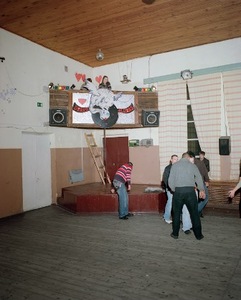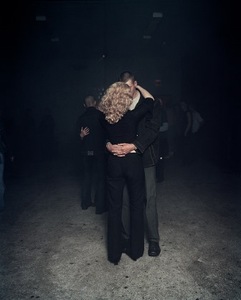What is left when everything is acceptable: contemporary blind pioneers 5
In brief: The exhibition of Lithuanian photography of the second half of the 20th century “(Un)acceptable” was closed at Vilnius Prospekto Gallery a week ago. The author did not see the exhibition itself but it gave food for thought about acceptable and unacceptable photography then and now.
Pioneers of Antanas Sutkus of the same period could serve as an example for the theme: “Blind Pioneer” (Kaunas, 1962) and “Pionierius” (Ignalina, 1964). The first was displayed only after Lithuania regained its independence, while the second was showcased in many exhibitions and received a number of awards in Lithuania and abroad.
It is interesting for the author to understand what could be the object of photography today that would be realised as unacceptable. He wants to understand what are those “blind pioneers” waiting for the better times and proper evaluation today, if there are any at all.
It is not a simple task as one of the main contemporary myths is that ideological censorship is related only with totalitarian regimes while there may be no censorship in the liberal, democratic and post-ideological society. Theoretically everything may be shown, except for totalitarian and extremist propaganda and views that violate dignity of human-beings and their groups.
The contemporary and free society loves to look at variety today the most. Still, variety is anesthetized in reality, it is made optimistic, always with the plus sign. Visually it is expressed by one of the most popular genres of contemporary photography: portraits of stylish, colourful, interesting, strange and non-standard city inhabitants. Such series of photographs may be found in news websites and street fashion blogs every day. The purest and most eloquent of this variety may be found in the project of Vincas Alesius “Humans of Vilnius”: the photographer publishes photographs of characters that attracted his attention in Vilnius streets on his Facebook page. Still, the controversial side of photography may be noticed in these views: photography is able to make everything noble and nice.
What could visually endanger the eye used to such photo-performance? The answer was not far – the author of the article was surprised by the public reaction to the project “Disco” of one American Lithuanian photographer Andrew Mikšys. He started the project 10 years ago and pictured Lithuanian countryside discos. The wide public got to know about the project in recent weeks due to the fact that the British daily The Daily Mail wrote about the book of this project prepared for the press. The Lithuanian mass media, leaning to opinions of authoritative experts, asserted that this was manipulation with the image of Lithuania and invited readers to compare “what was worse: Lithuanian countryside dances or British orgies”.
This is where all myths about the openness of the contemporary free society and its preparation to see and admit all existing problems end.
Mikšys takes the viewer to the pictured object inconveniently close, he says “Look, it does exist” to the viewer. One may even feel the insecurity and discomfort of the photographer himself. These photographs differ from “Grimaces of the Weary Village” of Rimaldas Vikšraitis a lot. In photographs of the latter artist distance is created by black-and-white colour and there is the feeling that the pictured environment is well known to the author and thus it is not so insecure.
Therefore, where is the blind pioneer today? The reaction of the free society to photographs of Mikšys makes one think that he turned into the viewer from the character of the photograph.












